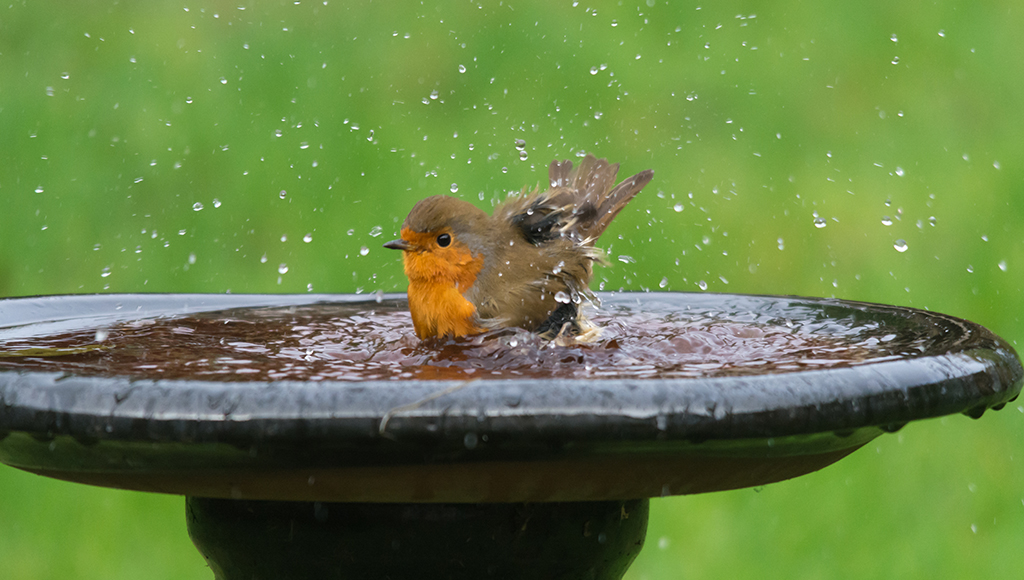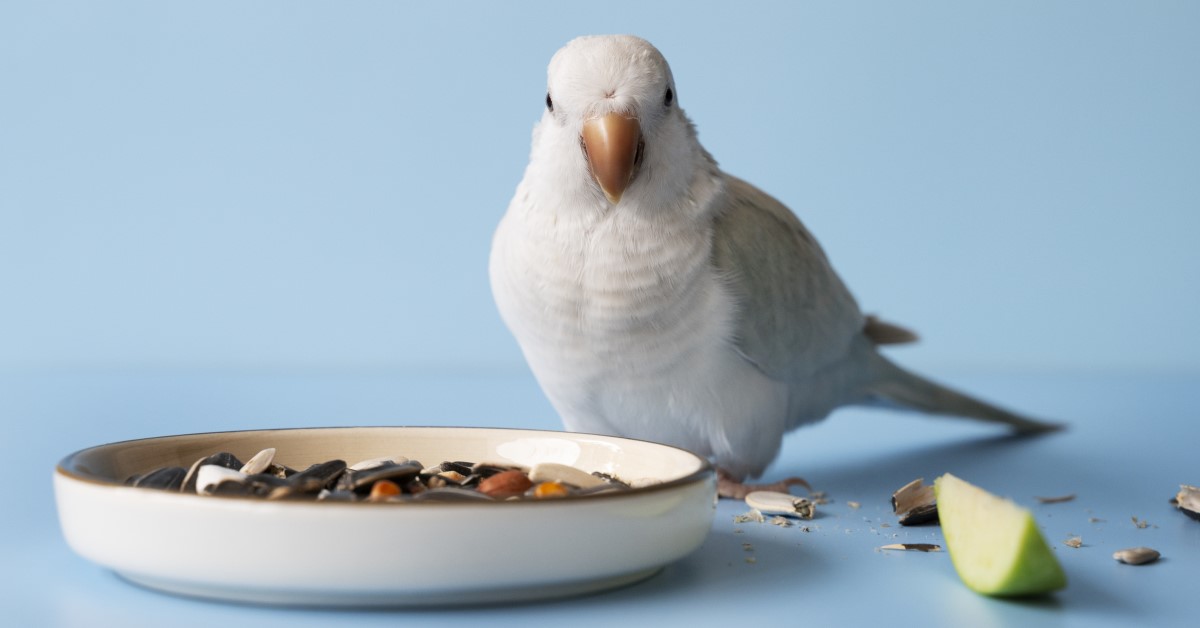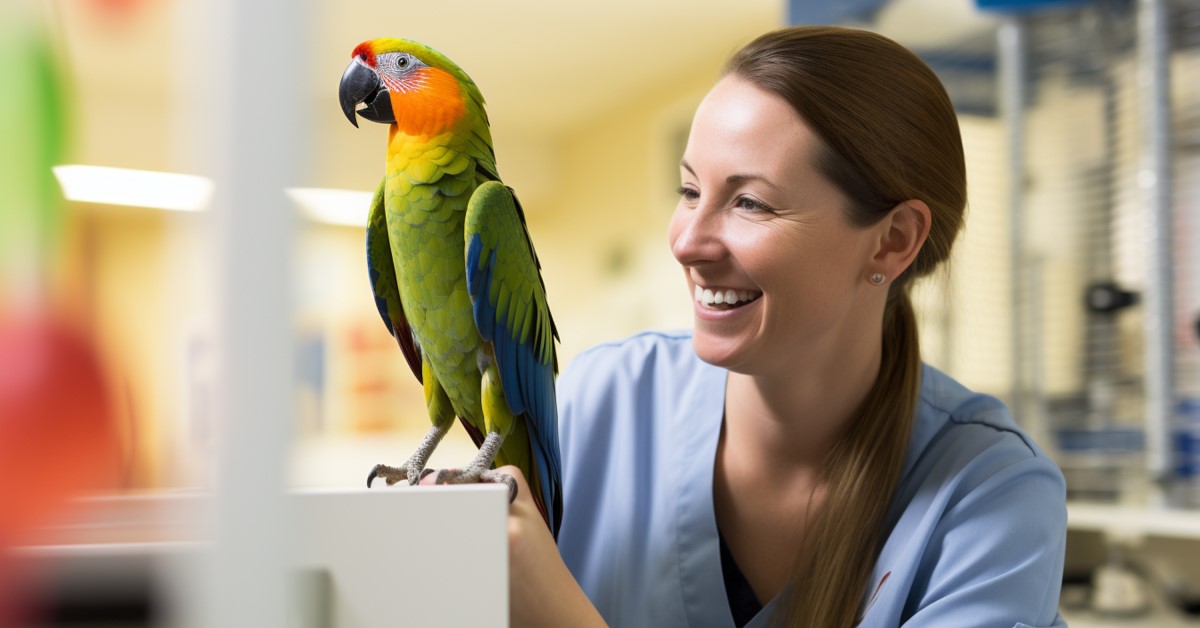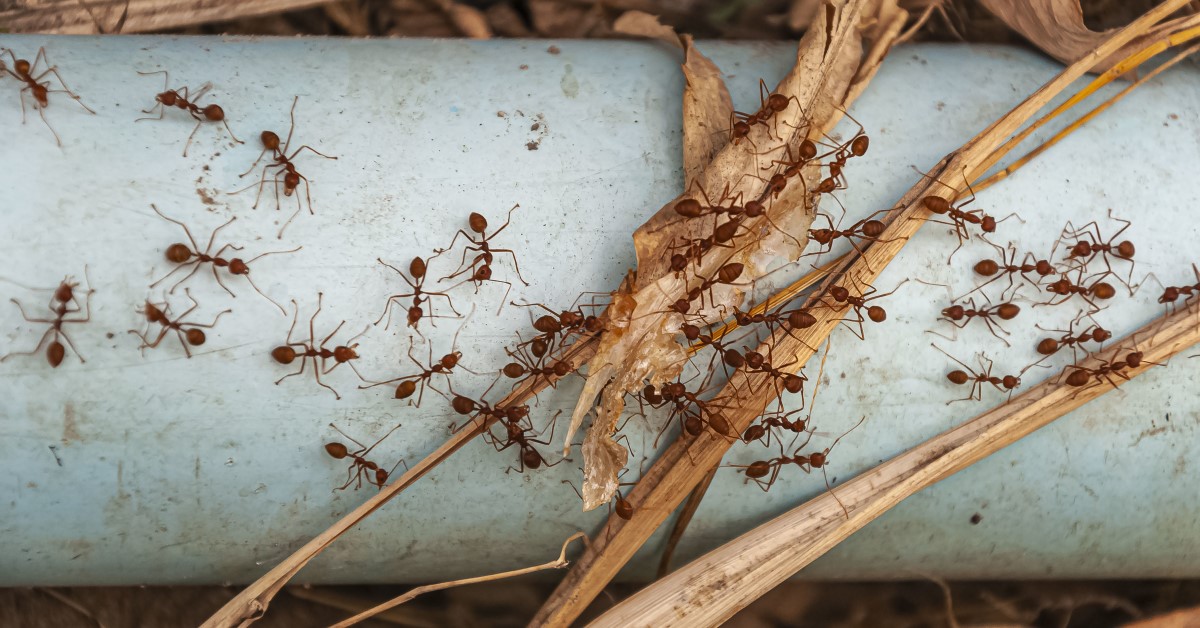Bathing Your Pet Bird
Looking for a challenge? Your feathered friend needs baths too.

It may sound odd, but just as your favorite feline or lovable canine, pet birds need to be bathed to ensure their good health. This important aspect of grooming is often neglected or forgotten altogether. Before you go dunking your feathered friend in the bathroom sink, it is a good idea to familiarize yourself with the proper method to help insure your bird’s health and safety.
New bird owners often have questions about the proper ways to bathe their birds. There are a few different bathing options that owners can try to figure out what their bird will enjoy. Every bird has its own personality, and will exhibit unique characteristics in regards to grooming behavior. Some birds love to play in the water, and enjoy bath time a great deal. Some birds have not been conditioned to accept bathing, and will resist with great fervor any contact with water, despite the fact that daily showers would be part of their natural grooming if they lived in the wild.
Even though it may take some considerable effort on the part of the owner to figure out the grooming method that works best for their particular bird, bathing is important to the bird's health and even reluctant birds really should be conditioned to accept it. By experimenting with the different methods, you will eventually come across just the right combination for your feathered companion.
Simple Bathing Rules:
While there are a variety of bathing methods for birds, there are a few simple rules that apply to bathing all pet birds:
- Use only plain, clear water. Although some pet supply
companies market commercial "bird shampoos", the best and safest
way to bathe your bird is with plain, clean water. Birds produce
special oil that they preen their feathers with, and commercial
shampoos may strip too much of this oil from the feathers. This
stripping can result in unhealthy feathers and unhappy birds.
- Only bathe your bird during the very warmest part of the day.
Wet birds can catch a chill quite easily, which can be a serious
health hazard. Bathing your bird during the warmest part of the
day allows your bird's feathers the opportunity to dry completely
before the temperature begins to drop as you get closer to
nightfall.
- Make sure the water is a comfortable temperature. Water that is too hot or cold can shock your bird's system, not to mention causing burns and a host of other serious conditions. Always check the temperature of the water before offering your bird a bath. Many birds prefer their bath water to be lukewarm or room temperature. The proper temperature will help your bird enjoy his bath time and perhaps even look forward to it, rather than fight it because it’s an uncomfortable experience.
- Never saturate your bird's feathers completely. In the wild, birds never allow their feathers to become completely soaked as this can lead to loss of body heat and flight impairment. When bathing your bird you should try to duplicate his wild counterparts’ bathing as closely as possible.
Birds, like any living creature, vary a great deal in the ways that they choose to bathe. Some birds love the feeling of a trickling shower, while others prefer to stand in a fine mist. Some birds like to dunk themselves in a pool of water. Try these different techniques at home with your pet to see which works the best for him.
Try preparing a shower for two of you. Being naturally social creatures, birds often enjoy taking a shower with their owners. There are even various avian shower products available such as special shower perches and sprayers. If you choose to introduce your pet to the shower, please be extremely patient at first. Begin your shower as usual and allow your bird to watch you before you attempt to convince him. If your bird decides on his own that the shower is a “friendly” thing and does not pose a threat, he may give it a try willingly.
Perhaps a soothing mist is more suited to your bird’s personality. A fine mist from a clean spray bottle is the method of choice for some birds. Many pet bird species originate from extremely warm and humid climates, and the spray helps to rehydrate their nasal cavities as well as clean their feathers. If you think your bird might benefit from a quick spritz, be sure to use pure warm water in a clean new spray bottle to make sure there are no chemical residues that could be toxic to your pet.
How about a dip in the bathroom sink? Many birds like to dip themselves into a pool of still water. Try pooling a bit of warm water in your sink and having your bird step down into it; don’t just thrust him into it. There’s a good chance that your bird's natural bathing instincts will take over from there, and he will be splashing around in no time. If you own a small bird that is reluctant to stand in the sink, try cupping warm water in the palms of your hands as your pet perches on the side of your thumb. Often times a bird will feel safer bathing in his owner's hands, and what a great bonding experience this can be!
If you observe your bird's reactions to these different techniques, it should be fairly easy to see which method your bird enjoys most. Once you’ve figured out how to bathe your bird, the next important step is figuring out how often, to achieve and maintain your bird’s optimal health. As with the different methods of bathing, how often a bird needs to be bathed often comes down to each bird's individual preference. While a good rule of thumb is to offer your bird a bath once a week, many birds will desire the opportunity to clean up more or less frequently. Consider the following points when deciding on a grooming schedule for your bird:
- Do you notice your bird bathing in his drinking water? When a bird decides that it's time to bathe, he will bathe in any manner that is available to him. For captive birds, this usually means a dip in their water bowl. If you notice your bird doing this fairly often, you can take it as a sign that bathing needs to be done more often.
- If your bird’s species requires more humidity than others,
especially those that originate from tropical areas and rain
forests, more frequent baths for this type of bird would likely
improve feather condition as well as your bird’s overall health
and happiness.
- Is your bird going through a molt? When birds molt, new feathers push their way through the skin, pushing out old feathers in the process. These new feathers are covered with a coating of keratin that sometimes needs to be softened so the feather inside can break free. Bathing your bird more frequently during a molt can help release these new feathers and soothe itchy skin. Baths also encourage preening, which will help your bird shed the old molted feathers.
By building a grooming routine around your bird's natural preferences, you will make bath time a more enjoyable experience for your pet. Pay attention to your bird's reaction to various techniques, and stick with the one that works best for both of you. Enjoy the time that you spend grooming your pet, and make it obvious to your bird that you view bathing as a positive experience. The extra time and special care you take to keep your bird clean will reward you with a much happier, healthier, beautiful companion.
Ready to start saving money on pet wellness care?
Then take a look at Mint Wellness, the pet wellness plan that provides fast reimbursement on routine pet care. Save on vaccinations, wellness exams, preventatives, dental, and more!
Learn More


